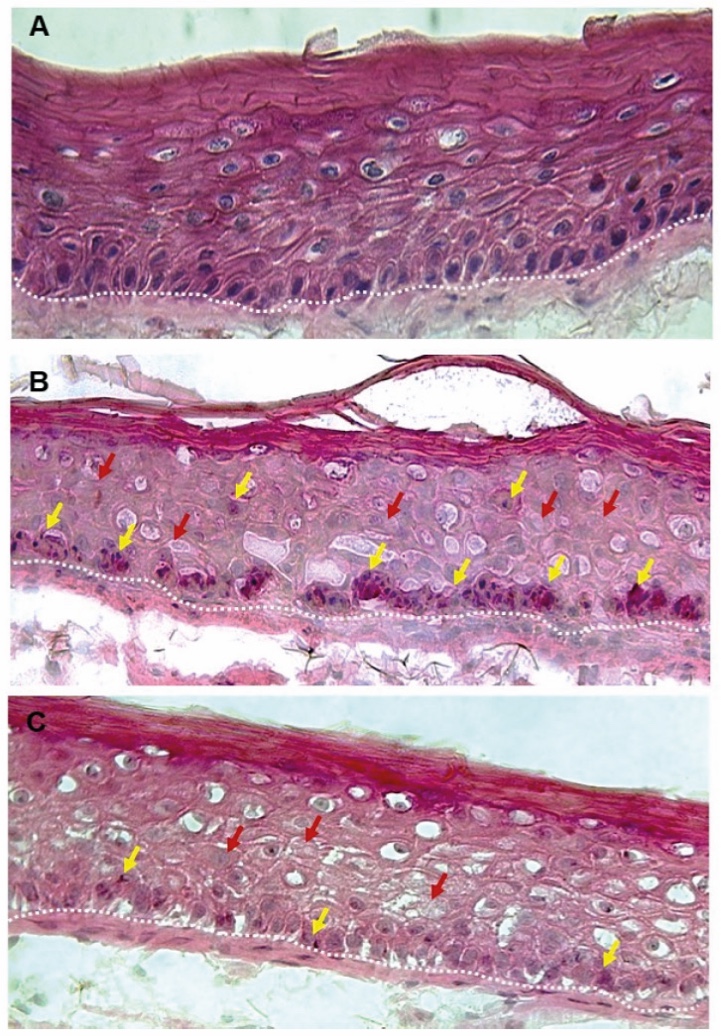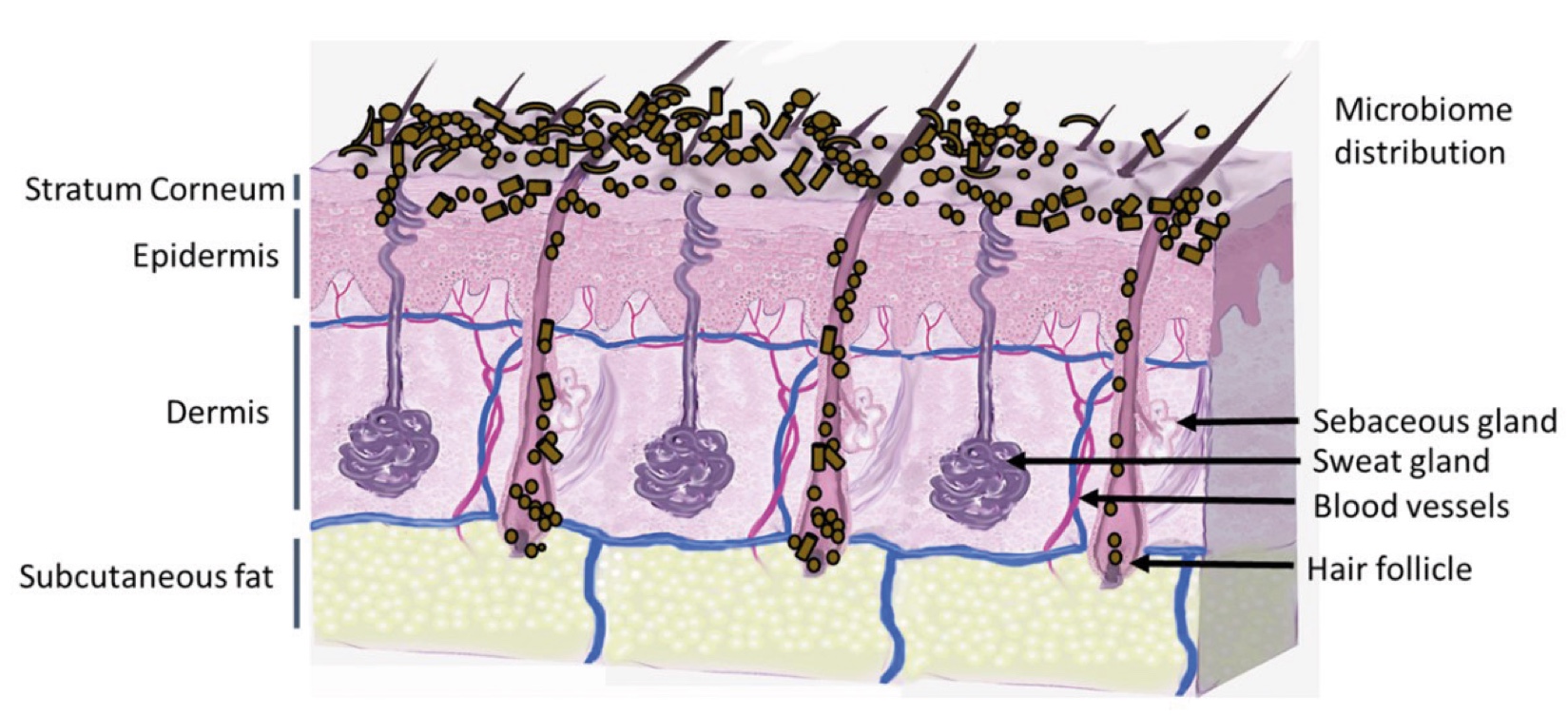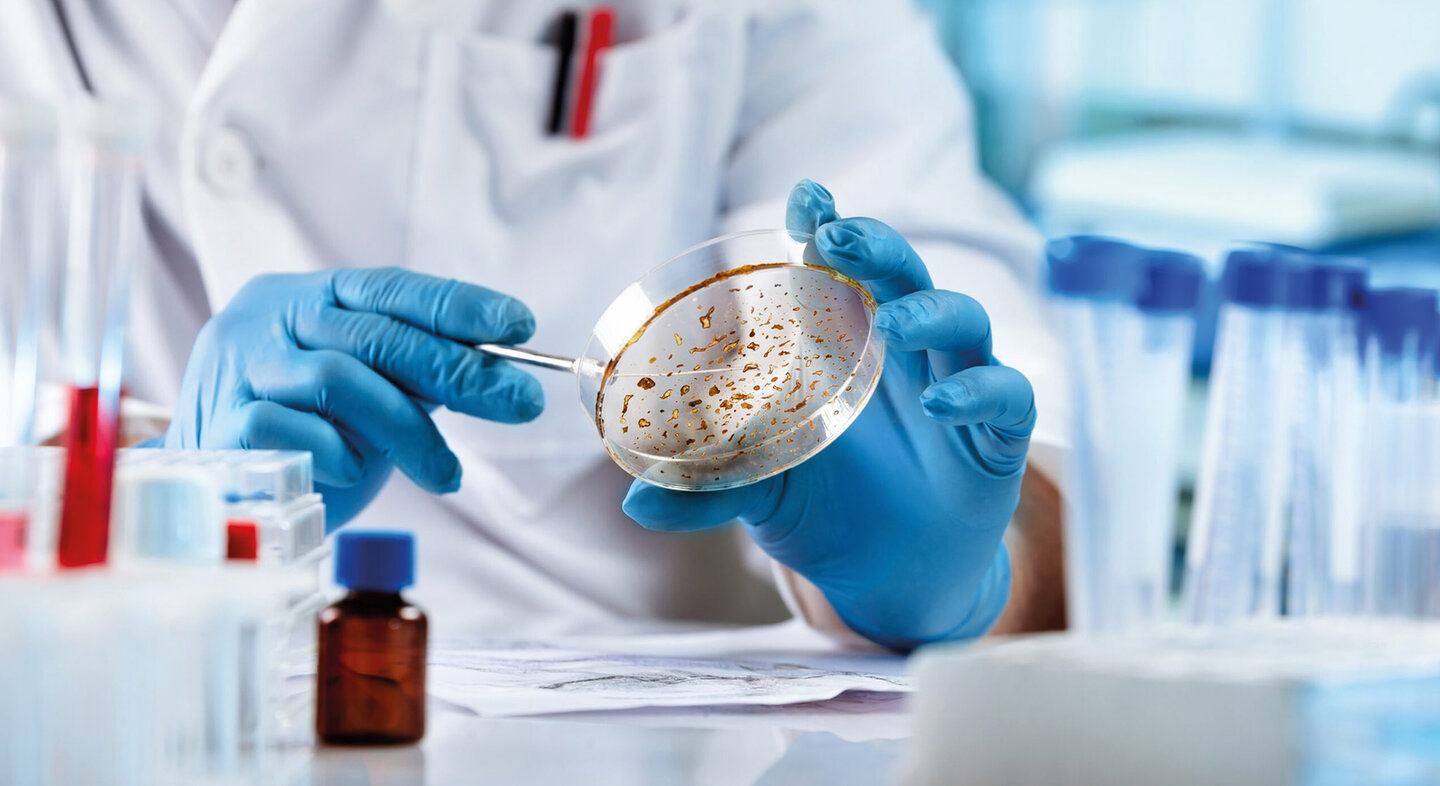The analytical arsenal of per- and Polyfluoroalkyl substance testing
CARRIE BROWN
Senior Manager, Regulatory Affairs, Household & Commercial Products Association
ABSTRACT: Over the few years, Per- and Polyfluoroalkyl Substances (PFAS), have gone from obscure chemical compounds to a household name. A large chemical class, boasting thousands of unique structures, these compounds were originally synthesized with robust chemical stability to withstand high temperatures and provide resistance to water. PFAS is not only difficult to destroy and persistent in the environment, but also complex to analyze.
Beyond the considerations of typical small molecule analysis, successful PFAS characterization often requires specialized sample preparation or additional steps, like advanced oxidation and adsorption processes due to the molecule’s chemical stability, polarity, and strong carbon-fluorine bond energy that make PFAS resistant to hydrolysis, photolysis, and chemical degradation. On top of that, laboratories need to be extremely careful not to cross-contaminate samples because these persistent chemicals may be present across many areas needed for testing from water sources to the testing equipment itself.
Extensive regulatory activity from a number of U.S. states, Canada, and the European Union has generated interest in applying test methods originally developed for water testing across a wide range of household and consumer products. As regulators adopt different thresholds and standards, an arsenal of analytical techniques is needed to keep up with this influx of novel samples that need to be treated as unique and complex matrices.
Introduction
Studies of major depressive disorder have been correlated with reduced Lactobacillus and Bifidobacteria and symptom severity has been correlated to changes in Firmicutes, Actinobacteria, and Bacteriodes. Gut microbiota that contain more butyrate producers have been correlated with improved quality of life (1).
A study in healthy women providing probiotic yogurt for four weeks showed an improvement in emotional responses as measured by brain scans (2). A subsequent study by Mohammadi et al. (3) investigated the impacts of probiotic yogurt and probiotic capsules over 6 weeks and found a significant improvement in depression-anxiety-stress scores in subjects taking the specific strains of probiotics contained in the yogurt or capsules. Other studies with probiotics have indicated improvements in depression scores, anxiety, postpartum depression and mood rating in an elderly population (4-7).
Other studies have indicated a benefit of probiotic supplementation in alleviating symptoms of stress. In particular, researchers have looked at stress in students as they prepared for exams, while also evaluating other health indicators such as flu and cold symptoms (1). In healthy people, there is an indication that probiotic supplementation may help to maintain memory function under conditions of acute stress.
“
“A study in healthy women providing probiotic yogurt for four weeks showed an improvement in emotional responses as measured by brain scans”

Figure 1. Skin Section with Microbiome. Most microorganisms live in the superficial layers of the stratum corneum and in the upper parts of the hair follicles. Some reside in the deeper areas of the hair follicles and are beyond the reach of ordinary disinfection procedures. There bacteria are a reservoir for recolonization after the surface bacteria are removed.
Materials and methods
Studies of major depressive disorder have been correlated with reduced Lactobacillus and Bifidobacteria and symptom severity has been correlated to changes in Firmicutes, Actinobacteria, and Bacteriodes. Gut microbiota that contain more butyrate producers have been correlated with improved quality of life (1).
A study in healthy women providing probiotic yogurt for four weeks showed an improvement in emotional responses as measured by brain scans (2). A subsequent study by Mohammadi et al. (3) investigated the impacts of probiotic yogurt and probiotic capsules over 6 weeks and found a significant improvement in depression-anxiety-stress scores in subjects taking the specific strains of probiotics contained in the yogurt or capsules. Other studies with probiotics have indicated improvements in depression scores, anxiety, postpartum depression and mood rating in an elderly population (4-7).
Other studies have indicated a benefit of probiotic supplementation in alleviating symptoms of stress. In particular, researchers have looked at stress in students as they prepared for exams, while also evaluating other health indicators such as flu and cold symptoms (1). In healthy people, there is an indication that probiotic supplementation may help to maintain memory function under conditions of acute stress.
Biotic ingredients with a proven skin anti-ageing effect
Over the past few years, per- and polyfluoroalkyl substances (PFAS) have gone from obscure chemical compounds to a household name. PFAS are distinct from other chemicals of concern as they are an extensive chemical class boasting thousands of unique structures. This class of compounds was originally discovered by accident in 1938 at DuPont’s Jackson Laboratory in New Jersey (1). When Roy J. Plunkett and his assistant Jack Rebok were conducting a series of experiments, they opened a tetrafluoroethylene (TFE) gas cylinder to find an unusual white powder that had spontaneously reacted to form a waxy solid that prevented gas from flowing out of the container. This substance would later be characterized as polytetrafluoroethylene (PTFE) and commercialized as Teflon. In the decades that followed, scientists would find that this substance is non-reactive, with high heat resistance and surface protection, and became well-known for its “non-stick” or low-surface friction properties.
This discovery would eventually lead to the development of many more chemicals forming the broad class of PFAS substances that utilize the robust chemical stability of carbon-fluorine bonds. The carbon-fluorine bond is one of the strongest single bonds in existence due to its short bond length and the high electronegativity of fluorine (2). Utilizing this unique chemistry, PFAS compounds were able to provide previously unknown levels of reactive stability, hydrophobicity, and lipophobicity. Unfortunately, these same beneficial properties make many PFAS compounds difficult to break down and can lead to their persistence in the environment if not properly managed. While attempts have been made, there is not a single definition for PFAS substances. Rather, these efforts have focused on structural definitions and satisfying regulatory efforts that, depending on the approach, can result in thousands of substances being classified as PFAS. The sheer number of PFAS substances and inherent non-reactivity makes these substances difficult to readily analyze. This is compounded by the diversity of PFAS, many of which have beneficial uses, but some that present significant environmental and human health concerns.

The development of PFAS compounds grew rapidly to meet difficult material science challenges in the 1960s. For example, PFAS containing aqueous film-forming foam (AFFF) was created in response to three serious fires on naval carriers in the 1960s because it served as an effective solution to control petroleum fires (3). One of these fires on the USS Forestal was considered the greatest loss of life on a U.S. Navy ship since World War II (4). The chemical properties of PFAS allowed the AFFF mixture to spread easily when mixed with water and subsequently installed in firefighting systems on ships and aircraft to prevent future tragedies like the USS Forestal fire.
As the applications for this class of chemicals grew, they were used around the world, and it became apparent that their chemical stability made them resistant to breaking down under natural conditions. The persistence of PFAS in the environment was largely recognized through a combination of laboratory studies, environmental monitoring, and scientific research. Early studies involving PFAS contamination at environmental sites, particularly PFOA perfluorooctanoic acid (PFOS) and perfluorooctane sulfonate (PFOA), relied on colorimetric and ion-selective electrode assays to detect PFAS in water samples (5). These assays were relatively simple and involved chemical reactions that produced color changes or electrochemical responses to indicate that PFAS were potentially present. However, these rudimentary methods lacked the specificity to identify specific PFAS compounds or accurately quantify the concentration of PFAS.
During the time that these substances were initially being commercially developed, analytical chemistry was still in its infancy. Chromatography had just been adopted by researchers as a versatile technique to separate and identify components in a mixture based on their differential interactions with a stationary phase and a mobile phase. In 1947, Arnold Beckman, the founder of Beckman Instruments, was presented with an early version of the gas chromatograph; however, he considered the apparatus too complex and a dead end at the time (6). Eventually, the adoption of chromatography would have a profound impact on analytical chemistry, enabling scientists across multiple disciplines to gain unprecedented insights into the composition of complex mixtures. Still, it would be decades before these techniques would be able to accurately and precisely quantify or identify even a fraction of the complex class of PFAS compounds.
Decades after Plunkett’s discovery, the U.S. Environmental Protection Agency (EPA) would be alerted to the persistence of PFAS compounds in the environment when water in Parkersburg, West Virginia, was found to be contaminated with PFOA (7). This led scientists around the world to begin extensively testing for PFAS chemicals in the environment at the end of the twentieth century. Many of these early studies relied on Total Organic Fluorine (TOF) analysis to detect PFAS presence in the environment (8). TOF emerged as a non-targeted analytical method capable of measuring the total fluorine content in samples by combusting PFAS samples at high temperatures. Combustion was required to analyze PFAS due to the strength of carbon-fluorine bonds and the high temperatures required to break them. While this method provided a useful screening tool to estimate the presence of PFAS in samples, it could not distinguish between PFAS and other fluorine-containing compounds. These limitations make this technique prone to false positives and incapable of accurately measuring PFAS concentrations.
In later studies, researchers would often use TOF analysis to screen samples for the presence of fluorinated compounds, then follow up with more comprehensive analysis techniques, such as tandem liquid chromatography-mass spectrometry (LC-MS/MS), which allowed for more precise identification and quantification of individual PFAS compounds (9). The use of chromatography allowed for better separation of PFAS compounds and improved specificity compared to earlier techniques. This, coupled with mass spectrometry, allowed for the identification and quantification of individual PFAS compounds. These methods provided a more detailed understanding of PFAS in environmental samples, which is crucial in assessing potential health and environmental risks and ensuring regulatory compliance.
The EPA has published methods to test for certain PFAS in drinking water, non-potable water, and source air emissions (10). The Agency has stated that analyzing PFAS in a comprehensive way has been a challenge that scientists at all levels of government are working to address and continue to work on methods for other matrices. The standardized EPA methods for measuring PFAS in water samples utilize Solid Phase Extraction (SPE) and LC-MS/MS. They are designed to measure a maximum of 25 PFAS analytes. The EPA and the Department of Defense are currently collaborating on the development of a single laboratory validated method for 40 PFAS compounds in wastewater, surface water, groundwater, soil, biosolids, sediment, landfill leachate, and fish tissue (11). However, until this method is validated and finalized, there is no standardized method to analyze PFAS in complex matrices. This is a challenge that many laboratories are struggling to overcome as regulatory activity for PFAS increases.
Increased public interest in PFAS has led to recent analytical developments that offer new approaches and tools capable of providing advanced detection and quantification of a wider range of PFAS compounds with greater accuracy. High-Resolution Mass Spectrometry (HRMS) has become a key tool for PFAS analysis, distinguishing between isomers and providing structural information, which aids in the identification of unknown PFAS chemicals (12). This level of robust instrumentation, combined with the enormous potential of emerging cheminformatics data and newly developed software tools, could unlock new possibilities for routine analysis and chemical management.
Balancing
the skin mocrobiome
Studies of major depressive disorder have been correlated with reduced Lactobacillus and Bifidobacteria and symptom severity has been correlated to changes in Firmicutes, Actinobacteria, and Bacteriodes. Gut microbiota that contain more butyrate producers have been correlated with improved quality of life (1).
A study in healthy women providing probiotic yogurt for four weeks showed an improvement in emotional responses as measured by brain scans (2). A subsequent study by Mohammadi et al. (3) investigated the impacts of probiotic yogurt and probiotic capsules over 6 weeks and found a significant improvement in depression-anxiety-stress scores in subjects taking the specific strains of probiotics contained in the yogurt or capsules. Other studies with probiotics have indicated improvements in depression scores, anxiety, postpartum depression and mood rating in an elderly population (4-7).
Other studies have indicated a benefit of probiotic supplementation in alleviating symptoms of stress. In particular, researchers have looked at stress in students as they prepared for exams, while also evaluating other health indicators such as flu and cold symptoms (1). In healthy people, there is an indication that probiotic supplementation may help to maintain memory function under conditions of acute stress.
Innovations in PFAS analysis are evolving as rapidly as regulation activities around the world. Miniaturized analytical instruments are making PFAS testing field-accessible, automation robotics are improving the efficiency and speed of PFAS analysis, and new pretreatment techniques, such as Dispersive Solid Phase Extraction (DSPE) (13), are improving sample preparation for complex matrices. A patchwork of mismatched limits and testing frameworks required by different regulating bodies may prevent the adoption of robust and innovative techniques that are currently in development or could be developed in the future.


Figure 2. Skin Section with Microbiome. Most microorganisms live in the superficial layers of the stratum corneum and in the upper parts of the hair follicles. Some reside in the deeper areas of the hair follicles and are beyond the reach of ordinary disinfection procedures. There bacteria are a reservoir for recolonization after the surface bacteria are removed.
Extensive regulatory activity from several U.S. states, Canada, and the European Union has generated interest in applying the test methods originally developed for water samples across a wide range of household and consumer products. These products often contain diverse chemistries, come in a variety of forms, and have complex supply chains. More research is needed to understand the sample preparation techniques and clean-up steps required to properly analyze PFAS in these materials and minimize interferences from other substances present in the sample that may disrupt the analysis or reduce the sensitivity of results. On top of that, laboratories need to be extremely careful not to cross-contaminate their samples because these persistent chemicals may be present across many areas needed for testing from water sources to the testing equipment itself. Recently, the EPA has made significant efforts to minimize interferences in PFAS testing through comprehensive guidelines and procedures. These efforts include emphasizing the proper cleaning of equipment before and after use, verifying the cleanliness of disposable items to ensure they meet detection limits, and highlighting the importance of conducting method blanks to assess potential material interferences (10).
Beyond the typical considerations of small molecule analysis, successful PFAS characterization often requires specialized sample preparation, additional steps, and careful consideration of experimental controls. Advanced oxidation and adsorption processes due to the molecule’s chemical stability, polarity, and strong carbon-fluorine bond energy make PFAS resistant to hydrolysis, photolysis, and chemical degradation. There is an entire section in the EPA Draft Method 1633 (10) devoted to preventing contamination of solvents, reagents, glassware, and other sample processing hardware that may contain PFAS constituents or yield artifacts. Contamination and interferences can lead to elevated baselines and result in a misinterpretation of results. The method dictates specified cleaning techniques, solvent choices, and verification procedures to avoid cross contamination of PFAS. There must be careful attention to detail throughout the analytical process to characterize these samples accurately. Still, the uptick in regulations across the U.S. related to PFAS may not allow for the thorough development of methods tailored to the unique characteristics of these complex samples. This could result in suboptimal methods that may not provide accurate or sensitive measurements.
For the regulated community and enforcement entities, the need for specialized equipment and expertise may strain laboratories that lack access to these resources. To address these challenges, collaboration between policymakers, analytical experts, and other stakeholders is crucial to balance the urgency of regulatory action with developing well-validated and standardized PFAS testing methods. An arsenal of analytical techniques will be needed to keep up with the influx of novel PFAS samples heading into laboratories in the years to come.
Conclusion
Studies of major depressive disorder have been correlated with reduced Lactobacillus and Bifidobacteria and symptom severity has been correlated to changes in Firmicutes, Actinobacteria, and Bacteriodes. Gut microbiota that contain more butyrate producers have been correlated with improved quality of life (1).
A study in healthy women providing probiotic yogurt for four weeks showed an improvement in emotional responses as measured by brain scans (2). A subsequent study by Mohammadi et al. (3) investigated the impacts of probiotic yogurt and probiotic capsules over 6 weeks and found a significant improvement in depression-anxiety-stress scores in subjects taking the specific strains of probiotics contained in the yogurt or capsules. Other studies with probiotics have indicated improvements in depression scores, anxiety, postpartum depression and mood rating in an elderly population (4-7).
Other studies have indicated a benefit of probiotic supplementation in alleviating symptoms of stress. In particular, researchers have looked at stress in students as they prepared for exams, while also evaluating other health indicators such as flu and cold symptoms (1). In healthy people, there is an indication that probiotic supplementation may help to maintain memory function under conditions of acute stress.
References and notes
- Plunkett, Roy J., Seymour, Roy B.; Kirshenbaum, G.S. The History of Polytetrafluoroethylene: Discovery and Development. Proceedings of the Symposium on the History of High Performance Polymers at the American Chemical Society Meeting. High Performance Polymers: Their Origin and Development. April 1986. New York: Elsevier. ISBN 0-444-01139-0.
- O'Hagan D (February 2008). "Understanding organofluorine chemistry. An introduction to the C–F bond". Chem Soc Rev. 37 (2): 308–19.
- Method of Extinguishing Liquid Hydrocarbon Fires (1963)
- Coffelt, John (24 July 2012). "Forty-five years later, veteran remembers worst naval disaster since WW II". Manchester Times.
- Guy, W.S., Taves, D.R., & Brey, W.S. (1976). Organic Fluorocompounds in Human Plasma: Prevalence and Characterization.
- Ivan G. Kolomnikov, Alexander M. Efremov, Tatyana I. Tikhomirova, Nadezhda M. Sorokina, Yury A. Zolotov, Early stages in the history of gas chromatography, Journal of Chromatography A, Volume 1537, 2018, Pages 109-117, ISSN 0021-9673,
- The PFAS Project, https://pfasproject.com/parkersburg-west-virginia/
- Jon Belisle, D.F. Hagen, A method for the determination of perfluorooctanoic acid in blood and other biological samples, Analytical Biochemistry, Volume 101, Issue 2, 1980, Pages 369-376
- Abd Ur Rehman, Michelle Crimi, Silvana Andreescu, Current and emerging analytical techniques for the determination of PFAS in environmental samples, Trends in Environmental Analytical Chemistry, Volume 37, 2023,
- PFAS Analytical Methods Development and Sampling Research, https://www.epa.gov/water-research/pfas-analytical-methods-development-and-sampling-research
- 4th Draft Method 1633* Analysis of Per- and Polyfluoroalkyl Substances (PFAS) in Aqueous, Solid, Biosolids, and Tissue Samples by LC-MS/MS
- Hanna Joerss, Frank Menger, The complex ‘PFAS world’ - How recent discoveries and novel screening tools reinforce existing concerns, Current Opinion in Green and Sustainable Chemistry, Volume 40, 2023
- van der Vegt, M., Kause, R., Berendsen, B., & van Leeuwen, S. (2022). Dispersive Solid-Phase Extraction and Solid-Phase Extraction for ppt-level PFAS Analysis in Apples: A Comparison. LC GC Europe, 35(s7), 25-27.

